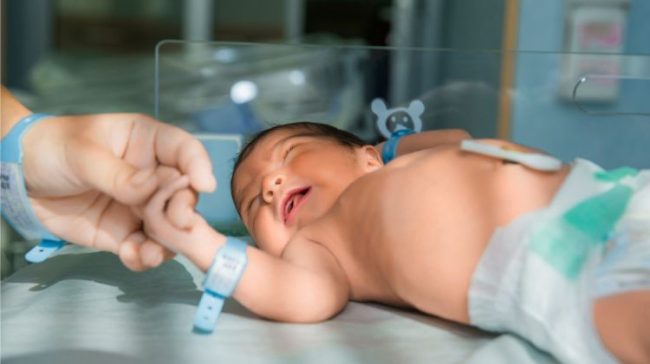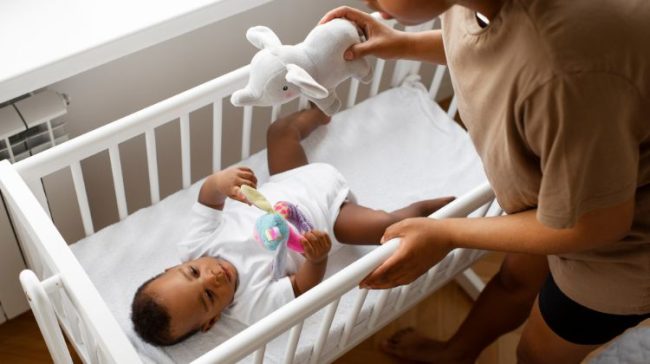Childbirth is a natural process, but at times, complications arise that require medical interventions to ensure the safety of both mother and child. One such intervention is the Cesarean section, commonly known as a C-section. An emergency C-section is performed when unforeseen complications during labor put the mother or the baby at risk. In this article, we’ll delve deep into emergency C-sections, the reasons behind them, the procedure, and what to expect post-surgery.
What is an Emergency C-Section?
An emergency C-section is an unplanned, immediate surgical procedure to deliver a baby. Unlike scheduled C-sections, which are planned in advance due to known medical or obstetric reasons, emergency C-sections are conducted when unexpected issues arise during the course of natural labor or induced labor.
Reasons for Emergency C-Sections
Various factors can lead to the need for an emergency C-section. Some of the most common reasons include:
1. Fetal Distress
One of the primary reasons for an emergency C-section is when medical professionals detect signs of fetal distress during labor. Fetal distress may indicate that the baby is not receiving enough oxygen or is experiencing other complications.
2. Prolonged Labor
If labor is excessively long and not progressing as expected, it can put both the mother and the baby at risk. An emergency C-section may be performed to expedite delivery.
3. Placental Issues
Problems with the placenta, such as placenta previa (where the placenta partially or completely covers the cervix) or placental abruption (when the placenta detaches from the uterine wall), can necessitate an emergency C-section.
4. Breech Presentation
If the baby is in a breech position (feet or buttocks first) rather than the head-down position, an emergency C-section may be recommended because a vaginal delivery in this situation can be risky.
5. Umbilical Cord Complications
When the umbilical cord becomes compressed or prolapsed (descends into the birth canal ahead of the baby), it can disrupt the baby’s oxygen supply, requiring an emergency C-section.
6. Maternal Health Issues
Serious maternal health problems, such as preeclampsia, eclampsia, or severe bleeding, may necessitate an emergency C-section to protect the mother’s life.
The Procedure: What Happens During an Emergency C-Section?
An emergency C-section is a surgical procedure conducted in an operating room. Here is a step-by-step overview of what typically happens during the surgery:
1. Anaesthesia
The first step is to administer anaesthesia. Most often, this is done via epidural or spinal anaesthesia, which numbs the lower half of the body while allowing the mother to remain awake and alert. In certain emergency situations, general anaesthesia may be used to put the mother to sleep.
2. Surgical Incision
Once the anaesthesia takes effect, the surgeon makes an incision in the lower abdomen, typically horizontal, just above the pubic hairline. This incision is often referred to as a “bikini cut” incision.
3. Uterine Incision
After the abdominal incision, a second incision is made in the uterus, through which the baby is delivered. The type of uterine incision depends on the circumstances and can be vertical (up and down) or horizontal (side to side).
4. Delivery of the Baby
The baby is gently guided out through the uterine incision and then the abdominal incision. The medical team ensures that the baby is breathing and in stable condition.
5. Placental Removal
After the baby is delivered, the placenta is removed from the uterus.
6. Closing Incisions
The surgeon carefully stitches up the uterine incision, followed by the abdominal incision. These incisions are usually closed with dissolvable sutures or staples.
Risks and Complications
While emergency C-sections are often life-saving procedures, they are not without risks. Some potential risks and complications associated with emergency C-sections include:
- Infection: Like any surgical procedure, there is a risk of infection at the incision sites.
- Blood Loss: Significant blood loss can occur during the surgery, which may necessitate blood transfusions.
- Anaesthesia Complications: Complications related to anaesthesia can occur, such as allergic reactions or respiratory issues.
- Injury to Organs: In rare cases, nearby organs, such as the bladder or bowel, can be accidentally injured during the procedure.
- Blood Clots: The immobility associated with surgery can increase the risk of blood clots forming in the legs or lungs.
- Longer Recovery: Recovery from a C-section often takes longer than recovery from a vaginal birth. It may also involve more pain and discomfort.
- Future Pregnancy Complications: Multiple C-sections may increase the risk of complications in future pregnancies, such as uterine rupture or placenta accreta.
Recovery and Postoperative Care
Recovery following an emergency C-section can vary from person to person, but there are general guidelines to follow:
- Hospital Stay: Typically, mothers who undergo an emergency C-section stay in the hospital for a longer duration than those who have a vaginal delivery. The length of the hospital stay can range from 2 to 4 days or more, depending on individual circumstances.
- Pain Management: Pain at the incision site is common after a C-section. Medications and pain management strategies are provided to help alleviate discomfort.
- Incision Care: Keeping the incision clean and dry is essential to prevent infection. Your healthcare provider will provide specific instructions on incision care.
- Restricted Activities: In the initial weeks after surgery, mothers are advised to avoid heavy lifting and strenuous activities to allow the incision to heal properly.
- Breastfeeding: Breastfeeding is encouraged and can often be initiated soon after surgery, depending on the mother’s condition.
- Emotional Support: Emotional support is vital during the recovery process. Mothers may experience a range of emotions, and it’s important to seek help if feelings of anxiety or depression persist.
- Postpartum Check-Up: A follow-up appointment with a healthcare provider is essential to monitor the incision healing and overall recovery progress.
Coping with the Emotional Aspect
An emergency C-section can be an emotionally challenging experience for expectant mothers and their partners. It’s important to acknowledge and address these emotions:
- Disappointment: Many women have a birth plan in mind, and an emergency C-section can deviate from those expectations. It’s essential to process any feelings of disappointment and come to terms with the necessity of the procedure.
- Fear and Anxiety: The urgency of an emergency C-section can be frightening. Open communication with healthcare providers, as well as emotional support from partners, family, or counsellors, can help alleviate anxiety.
- Bonding with the Baby: Some mothers worry that an emergency C-section might affect their ability to bond with their newborn. Skin-to-skin contact and breastfeeding can foster a strong connection between mother and baby.
- Seeking Support: Joining support groups, talking to friends or family who have experienced C-sections, or seeking professional counselling can help mothers and partners cope with the emotional aspect of the experience.
VBAC (Vaginal Birth After C-Section)
In some cases, mothers who have previously had a C-section may consider attempting a vaginal birth for subsequent pregnancies. This is known as VBAC or vaginal birth after cesarean. However, it’s essential to discuss the possibility of VBAC with a healthcare provider, as it depends on various factors, including the type of uterine incision from the previous C-section and the reason for the previous surgery.
Final Thoughts
Emergency C-sections are critical procedures that can save the lives of both mothers and babies when complications arise during childbirth. Understanding the reasons for emergency C-sections, the surgical procedure, potential risks and complications, recovery, and the emotional aspects of the experience is crucial for expectant mothers and their partners.
While it’s natural to have concerns and fears, trusting in the expertise of healthcare providers and seeking emotional support can help navigate the challenges associated with emergency C-sections. Ultimately, the goal is to ensure the safety and well-being of both mother and baby during this pivotal moment in life.
Frequently Asked Questions (FAQs)
1. What is the difference between an emergency C-section and a scheduled C-section?
A scheduled C-section is planned in advance based on medical or obstetric reasons, allowing for preparations and specific timing. An emergency C-section, on the other hand, is unexpected and conducted when unforeseen complications arise during labor that pose a risk to the mother or baby.
2. How long does an emergency C-section procedure take?
The actual surgical procedure usually takes about 45 minutes to an hour. However, the baby is typically delivered within the first 10-15 minutes, with the remaining time spent closing the incisions.
3. Will I feel any pain during the emergency C-section?
Anesthesia, usually regional (epidural or spinal block), ensures you don’t feel pain during the procedure. However, you might feel pressure or tugging sensations. If general anesthesia is used, you’ll be asleep and won’t feel anything.
4. What is the recovery time after an emergency C-section?
Recovery varies for every individual. While you’ll be up and moving within 24 hours, full recovery can take six weeks or more. Hospital stays after a C-section are typically 3-4 days.
5. Will an emergency C-section affect my ability to breastfeed?
An emergency C-section may slightly delay milk production, but many mothers successfully breastfeed after the surgery. Lactation consultants can offer support and guidance.
6. Does an emergency C-section mean I’ll need C-sections for future pregnancies?
Not necessarily. Many women can have a vaginal birth after a C-section (VBAC). However, the decision depends on the reasons for the initial C-section, the number of previous C-sections, and other individual factors.
7. How soon after an emergency C-section can I get pregnant again?
It’s generally advised to wait at least 18-24 months after a C-section before getting pregnant again, allowing your body adequate time to heal. However, always consult with your healthcare provider for personalised guidance.



